Museums
Walter Potter
The Wikipedia page.
Alas, the museum was dissolved in 2003.
Posted By: Paul - Thu Jan 23, 2014 -
Comments (3)
Category: Animals, Anthropomorphism, Beauty, Ugliness and Other Aesthetic Issues, Eccentrics, Hobbies and DIY, Museums, Outsider Art, Europe, Nineteenth Century, Twentieth Century
Hidden Treasures: What Museums Can’t or Won’t Show You
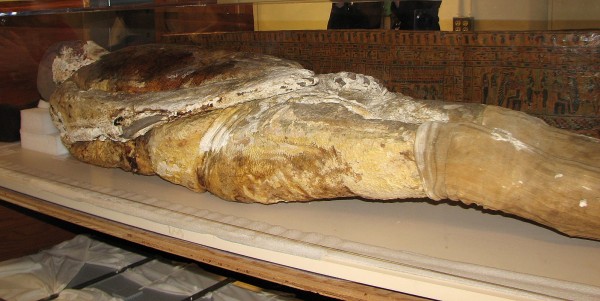
This fascinating book by Harriet Baskas is a perfect gift for the WU-vie in your life. Full of rare info about the bizarre objects--such as the Soap Man Mummy pictured here--which are stashed in museum back rooms, it offers hours of fun and amazement.
Posted By: Paul - Sun Dec 15, 2013 -
Comments (3)
Category: Museums, Weird Studies and Guides
Madge Gill
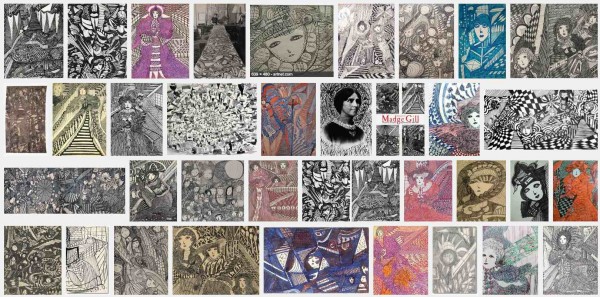
[Click to enlarge]
Thanks to WU-vie Mark De Novellis, we learn of a new UK exhibition devoted to the work of outsider artist Madge Gill. If you image-google her name, you get tons of examples, such as you see above.
A nice visit if you're in the UK over the next several months.
Exhibition home page.
From the Wikipedia entry:
After recovering from her illness, she took a sudden and passionate interest in drawing, creating thousands of mediumistic works over the following 40 years, most done with ink in black and white. The works came in all sizes, from postcard-sized to huge sheets of fabric, some over 30 feet (9.1 m) long. She claimed to be guided by a spirit she called "Myrninerest" (my inner rest) and often signed her works in this name.
Posted By: Paul - Fri Aug 30, 2013 -
Comments (3)
Category: Museums, New Age, Outsider Art, Reader Recommendation, Europe, Nineteenth Century, Twentieth Century
German Mousetrap Museum
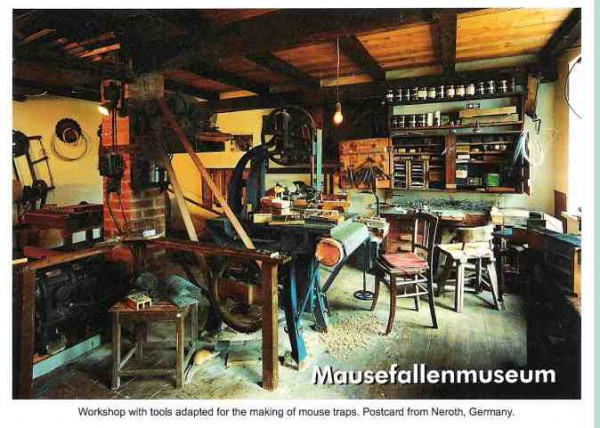
"This Museum was established in 1990 by the Heimatverein Neroth in the old School House to celebrate the mouse trap making cottage industry that had flourished in Neroth and nearby villages for over one hundred years."
Their German-language homepage.
And as a bonus, here is an incredible collection of mousetrap history books in PDF form.
Posted By: Paul - Wed May 01, 2013 -
Comments (2)
Category: Animals, Death, Museums, Technology, Rube Goldberg Devices, Europe
Oyster Growing on a Set of False Teeth
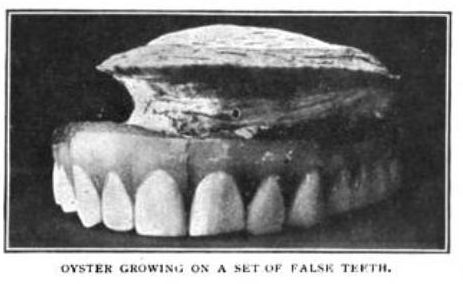
image source: The Strand magazine - 1903
Oysters will grow on almost any surface, including false teeth, if that's what happens to be available. The tooth-growing oyster shown above was found in the Chesapeake Bay in 1898, and sent to the Smithsonian where they were put on display and became quite a popular attraction. But soon a paternity battle erupted around them. The story was told in the Saint Paul Globe (Nov 30, 1902):
And, oddest of all, there is an upper set of false teeth to which an enterprising oyster is firmly attached.
The history of this last oyster is decidedly interesting. About four years ago it was raked out of the waters of Chesapeake bay by a dredging boat, together with the false teeth to which it was firmly fixed, and teeth and oyster were acquired by a hotel keeper at Cowart, Va., whose wife forwarded them to the Smithsonian Institution at Washington. The matter obtaining some advertisement, a man named Webster, residing in Bedford, Iowa, claimed the teeth, saying that he had lost them from a steamer bound for Norfolk.
The Smithsonian officials were undecided at first as to whether they should surrender the teeth or not, the object being so great a curiosity that they were anxious to hold on to it. But not many days later a Philadelphia woman claimed them, asserting that they were hers, and actually a third party, visiting the institution, demanded them, declaring that he recognized them as having been lost by himself.
Probably, from first to last, a good many persons have lost their false teeth overboard in the Chesapeake, the waters of which are liable to be pretty rough at times. Any way, the government scientists did not care to decide the dispute, and concluded to retain the specimen.
Half a century later, in 1954, yet another guy insisted the teeth were his, but in this case the Smithsonian was able to definitively rule out his claim, pointing out that the guy hadn't even been born yet when the teeth were found.
I'm guessing the Smithsonian probably still has this tooth-growing oyster hidden away somewhere in its archives.
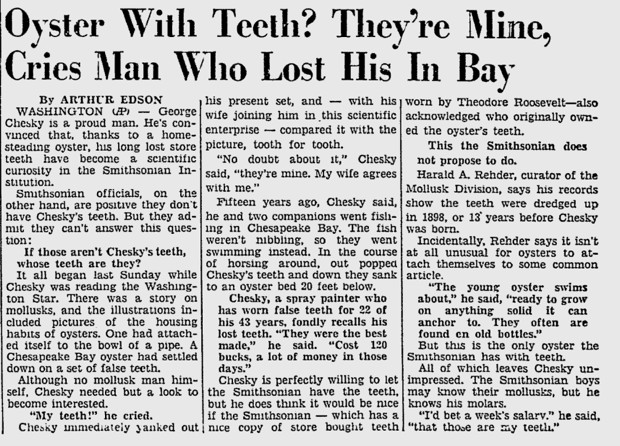
Daytona Beach Morning Journal - Jan 28, 1954
Posted By: Alex - Mon Nov 26, 2012 -
Comments (3)
Category: Freaks, Oddities, Quirks of Nature, Museums, Oceans and Maritime Pursuits, Natural Wonders
La Napoule
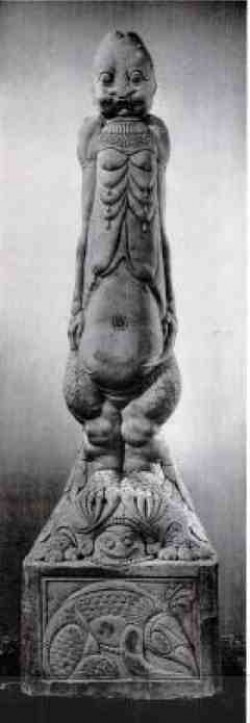
According to this LIFE magazine article, art collector Henry Clews had a taste for the bizzare, as seen in the statue above. His French Mediterranean home is now a museum, and you can visit, or even apply for an arts residency there!
Posted By: Paul - Thu Feb 09, 2012 -
Comments (5)
Category: Aliens, Art, Avant Garde, Surrealism, Dreams and Nightmares, Eccentrics, Collectors, Museums, 1950s, Europe
The Wellcome Collection
This might be a museum WU-vies wish to visit when they are next in London.
Home page.
PS: if I shut my eyes and just listen to this video, why do I think I'm hearing the cast of A Hard Day's Night?
Posted By: Paul - Mon Jan 23, 2012 -
Comments (4)
Category: Body, Skin and Skin Conditions, Eccentrics, Museums, Weird Studies and Guides
Found Footage Festival
Ah, the glorious old days of VHS tapes, when the world was first opened to amateur video! Please visit the website of the Found Footage Festival to see more wonders like the one above.
Posted By: Paul - Sun Jan 23, 2011 -
Comments (5)
Category: Museums, Video, Outsider Art, 1980s
La Gaite Lyrique
La Gaîté Lyrique from La Gaîté Lyrique on Vimeo.
Forget Ben Stiller and Night at the Museum. Here's the true weirdness behind the scenes at this new French museum.
Posted By: Paul - Sat Apr 03, 2010 -
Comments (7)
Category: Museums, Surrealism, Cartoons, Europe
Neon Boneyard
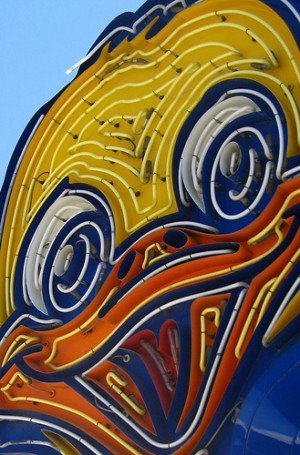
Here's a Flickr set from one person's visit.
Posted By: Paul - Thu Oct 15, 2009 -
Comments (1)
Category: Museums, Regionalism, Signage, Advertising

| Who We Are |
|---|
| Alex Boese Alex is the creator and curator of the Museum of Hoaxes. He's also the author of various weird, non-fiction, science-themed books such as Elephants on Acid and Psychedelic Apes. Paul Di Filippo Paul has been paid to put weird ideas into fictional form for over thirty years, in his career as a noted science fiction writer. He has recently begun blogging on many curious topics with three fellow writers at The Inferior 4+1. Contact Us |




